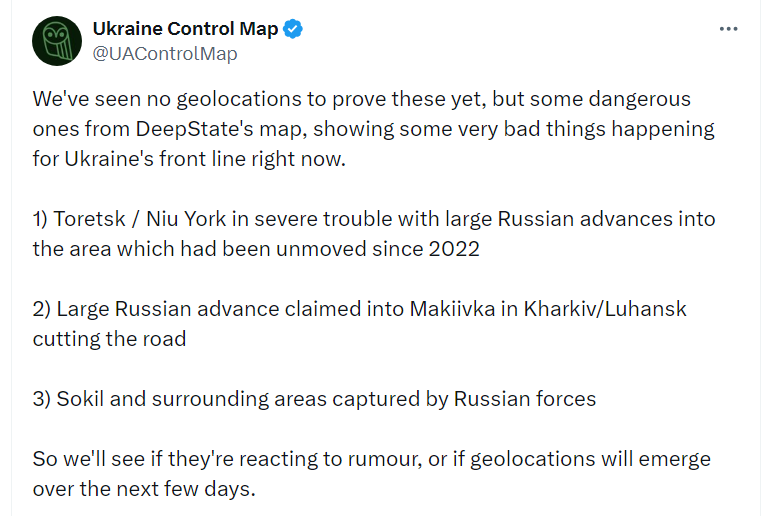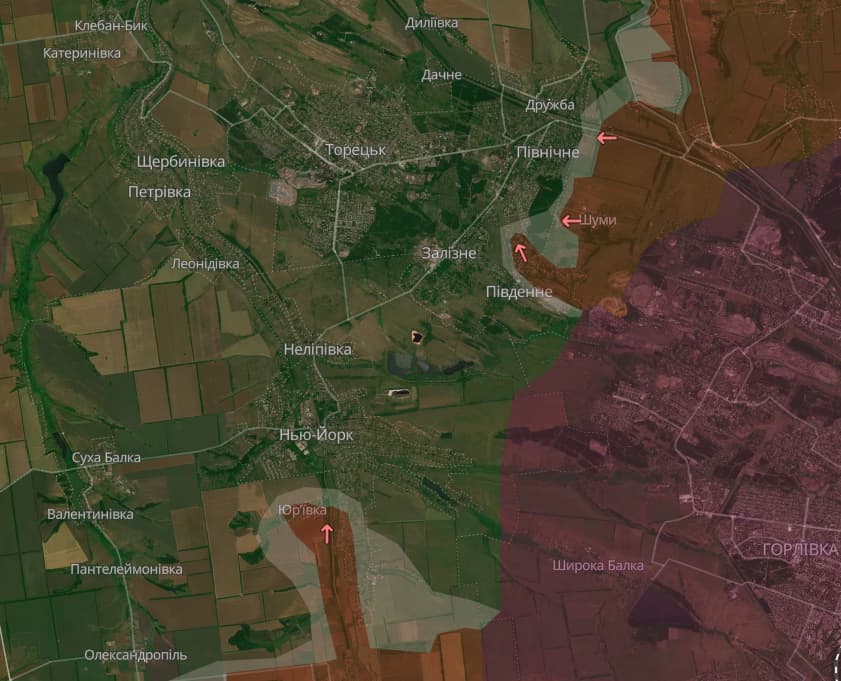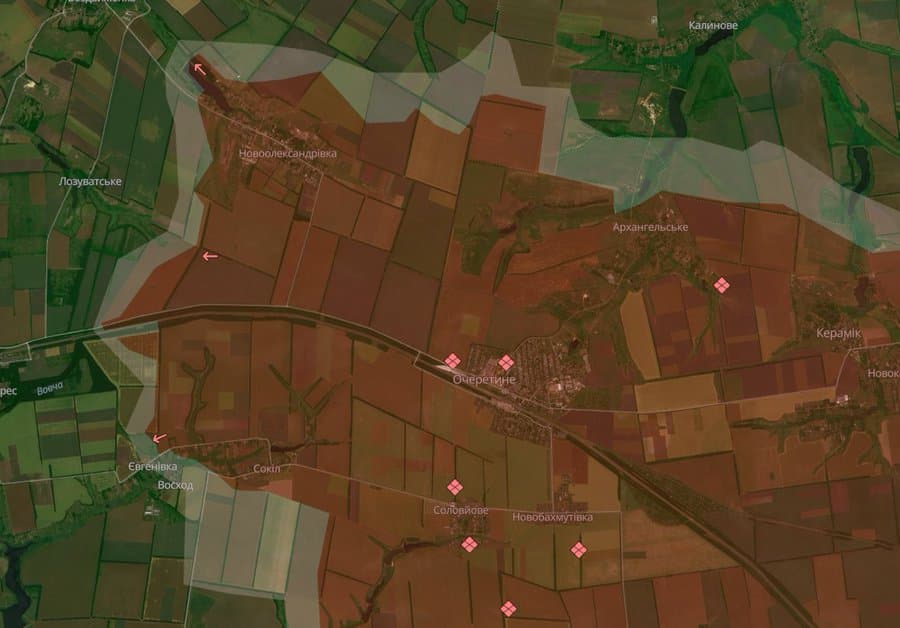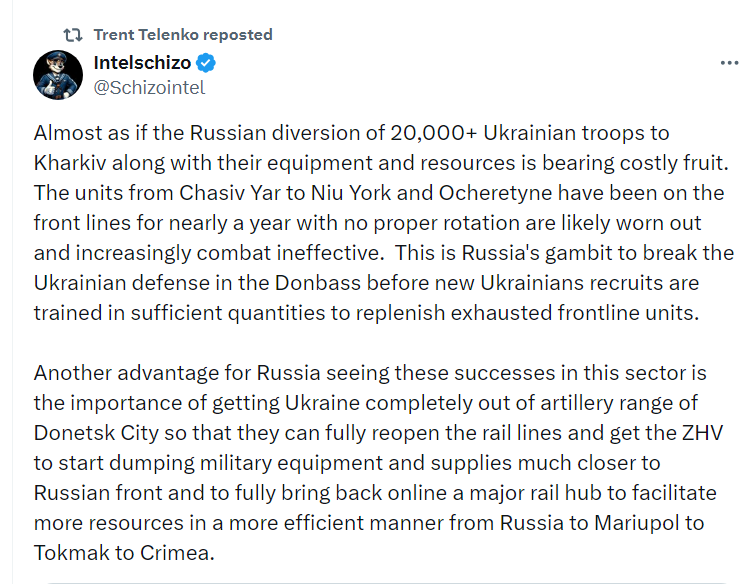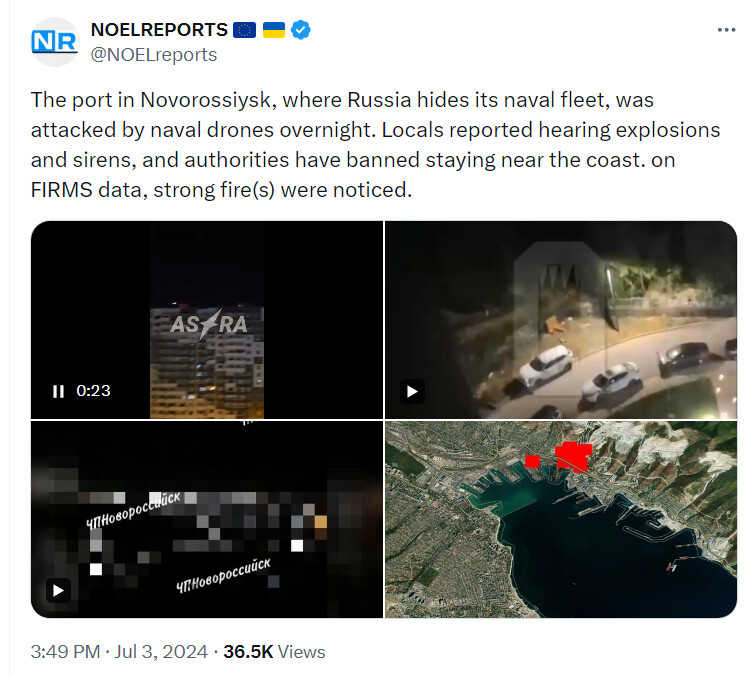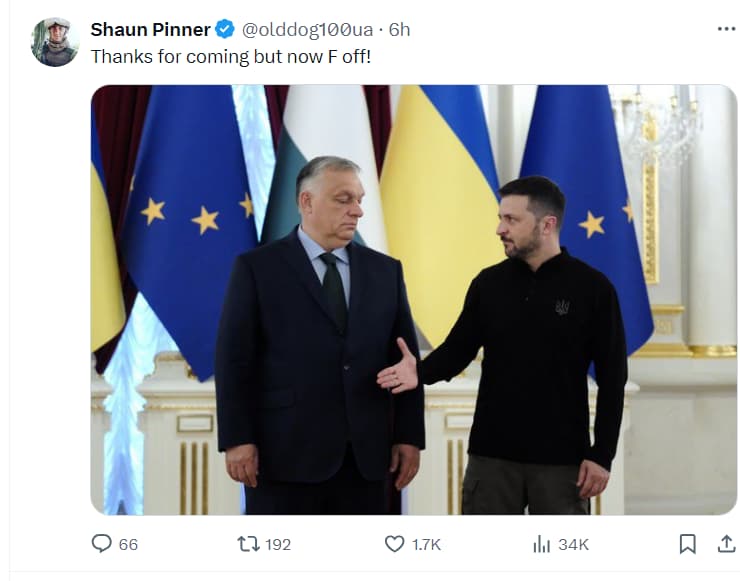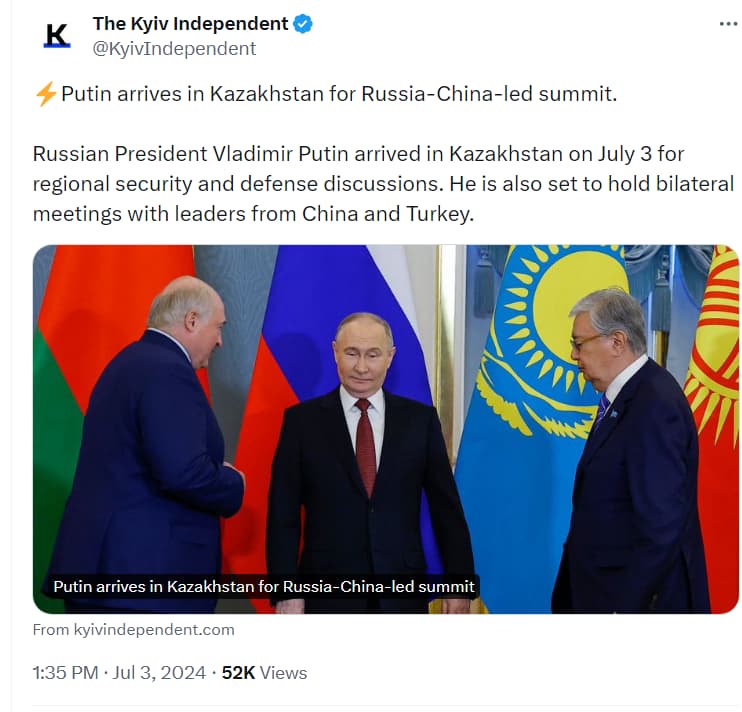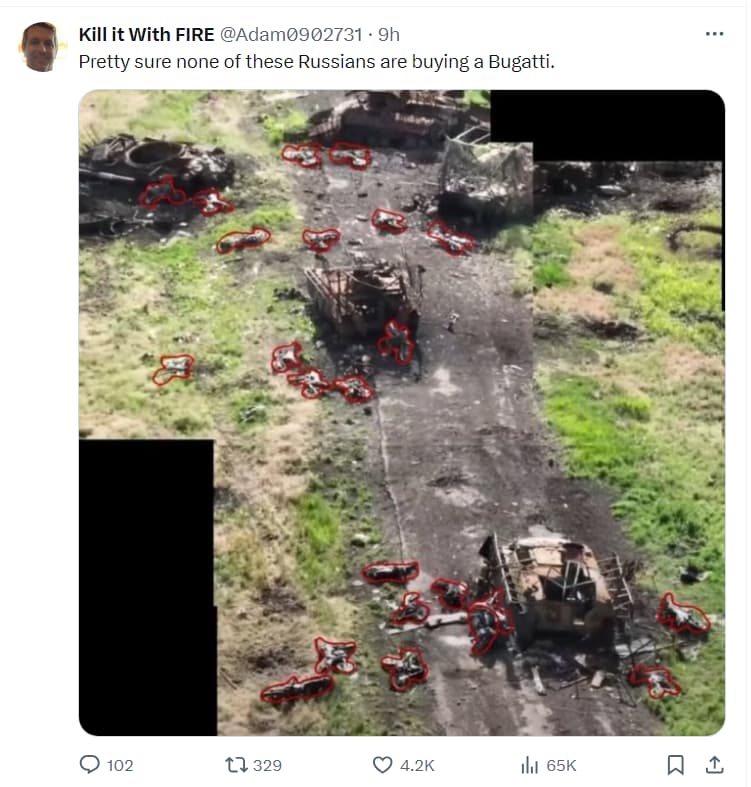Trump is considering a deal that would prevent NATO from expanding eastward, particularly into Ukraine and Georgia, and negotiating with Putin on how much Ukrainian territory Russia can keep, according to two national security experts linked to him.
Trump’s Plan for NATO Is Emerging. - POLITICO
Trump’s Plan for NATO Is Emerging.
Trump advisers envision a ‘radical reorientation’ in which Washington takes a back seat to Europe — and cuts a deal with Putin over Ukraine.
Donald Trump has threatened to leave NATO so many times — or has appeared to, anyway — that for many of his critics, it’s a question of when, not whether, he’d ditch the 75-year-old alliance if he’s reelected president in November.
In truth, Trump would be unlikely to quit NATO outright, according to interviews with former Trump national security officials and defense experts who are likely to serve in a second Trump term. But even if he doesn’t formally leave the organization, that doesn’t mean NATO would survive a second Trump term intact.
In return for continued U.S. participation, Trump would not only expect that European countries drastically increase their spending on NATO — his main complaint when he was president — but also undertake what one defense expert familiar with the thinking inside Trump’s national-security advisory circle, Dan Caldwell describes as a “radical reorientation” of NATO.
“We don’t really have a choice anymore,” Caldwell told POLITICO Magazine, citing rising U.S. debt, flagging military recruiting, and a defense industrial base that can’t keep up with the challenge from both Russia and China.
Neither Trump nor his campaign has yet named a new national security team or openly embraced a new agenda for NATO. The campaign did not respond to several requests for comment for this article.
But the former officials and experts who spoke for this article — some on the record and some on condition of anonymity — are engaged in an ongoing debate within Trump world over how hard to push the Europeans toward a security architecture more to Trump’s liking.
According to these officials, the U.S. would keep its nuclear umbrella over Europe during a second Trump term by maintaining its airpower and bases in Germany, England and Turkey, and its naval forces as well. Meanwhile, the bulk of infantry, armor, logistics and artillery would ultimately pass from American to European hands. Parts of this plan were floated in an article published in February 2023 by the Trump-affiliated Center for Renewing America, but in the months since, there’s been an emerging and more detailed consensus among Trump supporters on an outline of a new concept for NATO.
The shift they envision would involve “significantly and substantially downsizing America’s security role — stepping back instead of being the primary provider of combat power in Europe, somebody who provides support only in times of crisis,” said Caldwell, who recently served as a senior advisor to Russell Vought, the former senior Trump administration official who in May was named policy director for the Republican National Convention and who is expected to play a senior role in a second Trump administration. Vought is also president of the CRA.
Another part of the emerging Trump game plan is a two-tier NATO system. That idea, first proposed by another senior former Trump administration official, retired Army Lt. Gen. Keith Kellogg, means that member countries that have not yet met the target of spending 2 percent of GDP on defense “wouldn’t enjoy the defense largess and security guarantee of the United States,” according to one Trump-aligned national security expert who spoke on condition of anonymity to describe internal discussions. This could be seen to be in defiance of Article 5 of the treaty, which obliges every member to take “such action it deems necessary” to assist whoever is attacked. But members of the Trump foreign-policy brain trust noted that the language in Article 5 is flexible and does not require any member to respond with military force.
Trump has consistently expressed pique that NATO allies “rip us off” by not meeting the 2 percent spending target. Most recently, Trump actually appeared to invite a Russian attack against NATO deadbeats, saying he’d “encourage” the Russians to “do whatever the hell they want” with member countries that have not yet met the defense spending target — a decade after the NATO allies pledged to do so at their 2014 summit in Wales.
A swift resolution of the two-and-a-half-year Ukraine conflict would also likely play a key role in Trump’s plans for NATO. As part of a plan for Ukraine that has not been previously reported, the presumptive GOP nominee is mulling a deal whereby NATO commits to no further eastward expansion — specifically into Ukraine and Georgia — and negotiates with Russian President Vladimir Putin over how much Ukrainian territory Moscow can keep, according to two other Trump-aligned national security experts.
Altogether, Trump’s new approach in these areas would amount to a revolution in NATO’s affairs — one that many critics say Europe is wholly incapable of accomplishing in the foreseeable future. The U.S. is by far the largest contributor to NATO operations, spending about $860 billion on defense that represented 68 percent of the total expenditure of the NATO countries in 2023. That is well over 10 times more than that of Germany, the second largest-spending country. A substantial portion of that U.S. expenditure, which amounts to about 3.5 percent of U.S. GDP, goes to the defense of Europe though the Pentagon refuses to divulge publicly how much, says Jeremy Shapiro, research director for the European Council on Foreign Relations.
Meeting with President Joe Biden in Washington earlier this month, outgoing NATO Secretary-General Jens Stoltenberg announced that 23 of the 31 non-U.S. NATO members will now make the alliance’s 2 percent target. “That’s more than twice as many as four years ago,” Stoltenberg said. This is expected to include Germany for the first time since the early 1990s, and that country’s hawkish defense minister, Boris Pistorius, appears eager to do better, calling for Germany to shoot up to 3.5 percent of GDP on defense.
But even if Germany hits that mark, some Trump-aligned former defense officials say it’s still not nearly enough. “I’m in favor of sustaining the North Atlantic alliance, but I think the only way to do that — and I tell this to the Europeans all the time — is for them to assume a lot more of the burden,” said Elbridge Colby, who led the development of Trump’s National Defense Strategy as his deputy assistant defense secretary for strategy and force development and who is said to be in line for a senior national security post in a second Trump administration.
“We can’t be doing 10 times what the Germans are doing anymore, and we’ve got to be prepared to be tough with them. There’s got to be consequences,” Colby said in an interview. “We want NATO to be active, but we want it to be with the Europeans in the lead. That was the original idea. That was Dwight Eisenhower’s idea.” Only now, faced with a menacing China, the need for making such changes is far more urgent, Colby said. “The United States does not have enough military forces to go around. … We can’t break our spear in Europe against the Russians when we know the Chinese and Russians are collaborating, and the Chinese are a more dangerous and significant threat.”
Some of the Trump-aligned experts are mostly focused on the spending issue, while others want European countries to both spend more and assume far more of the military burden. Kiron Skinner, Trump’s former policy-planning chief under Secretary of State Mike Pompeo and a key player in Project 2025, an exhaustive agenda for Trump’s second term, emphasizes the need for more European spending as a starting point: “We need to right-size America’s role in the world in the 21st century, and that’s what I think this is about,” she said. “The U.S. is not the world’s ATM machine. NATO has a significant contribution to make in the Atlantic theater and the Indo-Pacific theater, but we need to do more strategic thinking on both sides.”
He is a backstabbing, traitorous coward.
Meh, compared to what you could have said about him, that would be like a term of endearment.
I was keeping my pejoratives towards Trump in context to the russo-Ukraine war, in keeping with the thread…
If the US does want Europe to take the lead in NATO, surely the US loses significant political capital with Europe too. It is a frank admission that China and Russia are too much to handle together.
NATO Summit in Washington in less than a week, big celebrations for the 75th anniversary.
China’s manufacturing base is the true threat, Russia is dying
Shades of Sheeds in '83
Putin knows that without Ukraine’s food bowl and industrial might, Russia only strength is its mineral wealth. And with renewables on the march, oil won’t its savour long term.
Which he has turned into either a mine riddled death trap or a waterless dust bowl
Some of it. A large part of the Donetsk industrial basin is totally wrecked as well.
Russia is the world’s largest wheat exporter, it now has a global market share of 26%.
AFAIK there are no sanctions on Russian agri foods and fertilisers.
Last year, reportedly, Russia had not made any donations to the WFP, but selectively donated to six countries . The WFP has purchased Russian grain at a negotiated price.



